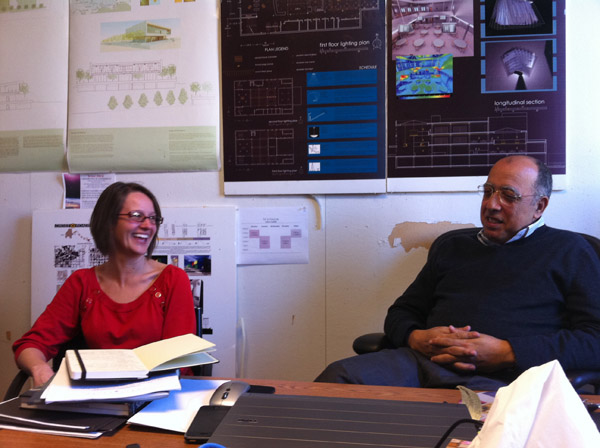March 29, 2011
Most of us don’t notice light until there’s a problem – sunlight creating glare on your computer screen, or a dim, steep stair. For users with visual impairment, everyday environments like restaurants with low lighting or a movie theater corridor can present problems – and lead to bumps and bruises.
“I mean no disrespect to architects but some will slap braille labels on the wall and think they’ve taken care of people with visual impairment,” said Elizabeth Phillips, a fifth-year architecture student in the Fay Jones School of Architecture and member of the Honors College. “Many people who are blind don’t read braille – and there’s a huge gap between the totally blind and those with 20/20 vision. That’s where I want to help.”
Her faculty mentor, architecture professor Tahar Messadi, added: “Light, color and texture are all important. How are thresholds defined? That’s the job of the architect, to draw on all of these elements to make good spaces.”
Phillips, who herself suffers from visual impairment, has received a SURF grant that will help her develop guidelines for lighting public spaces that ensures they are welcoming to all users and aesthetically pleasing as well. She will be using “evidence-based design,” an approach that she and Messadi discussed with KUAF’s Kyle Kellams recently. The interview, one of a series of with Honors College students and their faculty mentors, aired on KUAF’s Ozarks at Large program on Friday, April 1, 2011.

